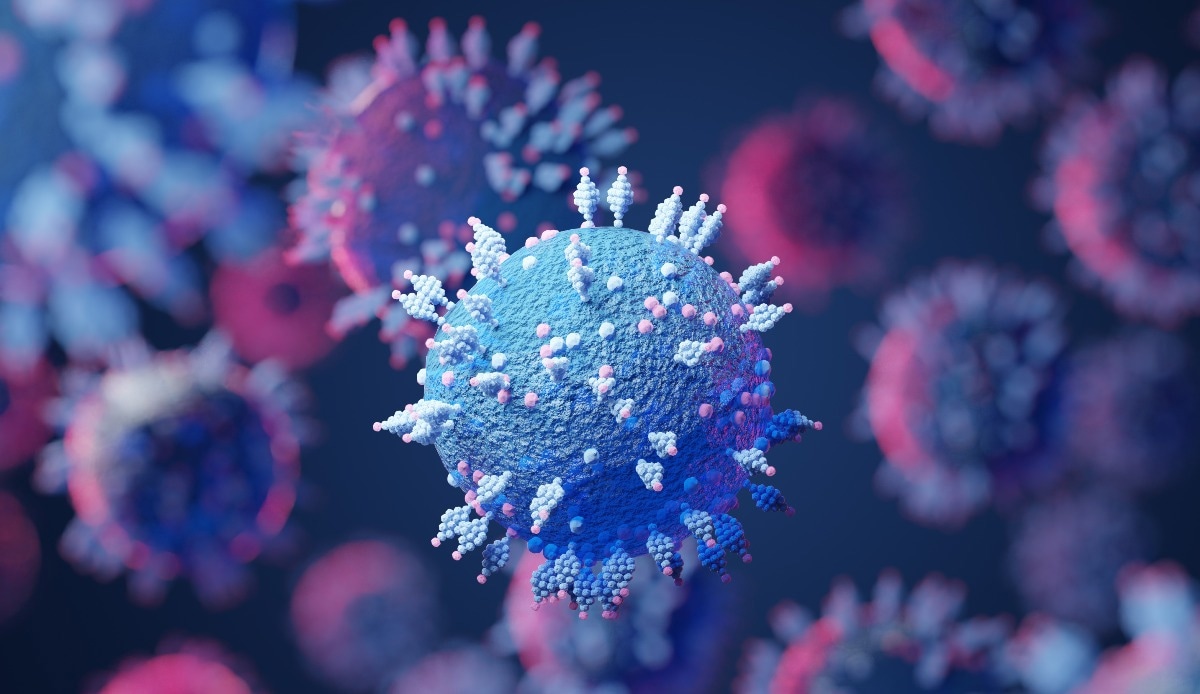In a recent study published in Pediatrics, researchers assessed humoral immune responses to and neutralization of the severe acute respiratory syndrome coronavirus 2 (SARS-CoV-2) Delta (B.1.617.2) variant of concern (VOC) after two months (T1) and 14 months (T2) of asymptomatic or mild wild-type (WT) SARS-CoV-2 infections.
 Study: Waning Immunity 14 Months After SARS-Cov-2 Infection. Image Credit: Fit Ztudio/Shutterstock
Study: Waning Immunity 14 Months After SARS-Cov-2 Infection. Image Credit: Fit Ztudio/Shutterstock
Data on long-term humoral immune responses against and neutralization of SARS-CoV-2 VOCs such as Delta and Omicron among children beyond one year of coronavirus disease 2019 (COVID-19) are lacking and required urgently for estimating the probability of SARS-CoV-2 reinfections and for guiding COVID-19 vaccination strategies.
About the study
In the present prospective cohort study, researchers assessed humoral immunity and the potency of neutralizing antibodies (nAb) against Delta infections at T1 and T2 intervals.
Data were analyzed at two timepoints, namely, at T1 (between May 11 and 20 June 2020) and at T2 (between 20 May and 28 May 2021) and local public health authorities enrolled individuals. The trends in Ab titers from the T1 phase to the T2 phase were analyzed and at T2, nAb titers against Delta were assessed since Delta was dominant in Germany during the T2 phase.
Serum samples were obtained from the participants and the titers of anti-SARS-CoV-2 Abs were assessed by enzyme-linked immunosorbent assays (ELISA). Live virus neutralization assays were performed to evaluate the Delta neutralization potency and SARS-CoV-2 was amplified in VeroE6 cells for cell culture experiments.
SARS-CoV-2 titers were evaluated based on their median tissue culture infectious dose (TCID50) values in Vero E6 cells. For the neutralization assays, the serum samples were treated with 6x104 TCID50 of Delta VOC, and SARS-CoV-2 replication was assessed by immunostaining for SARS-CoV-2 nucleoprotein (N)-based ELISA. A neutralization titer of 1:10 represented the cut-off for VOC detection.
Delta VOC was obtained from the nasopharyngeal swab specimens of a COVID-19 patient with a COVID-19 diagnosis confirmed by reverse transcription-polymerase chain reaction (RT-PCR) and sequencing. Linear mixed-effects (LME) regression and generalized linear mixed-effect models (GLMM) were used for the analysis.
At T1, the study included participants residing in households with ≥1 household member with RT-PCR-confirmed COVID-19 from oropharyngeal or nasopharyngeal swabs obtained ≥4 weeks before the study visit, ≥1 household member aged below 18 years, residing within the Baden-Württemberg state and all household members released from quarantine.
At T2, children and their parents who were seropositive at T1 were included. At T1, individuals without German language knowledge and for whom written consent was not provided were excluded from the analysis and at T2, individuals with laboratory-confirmed SARS-CoV-2 reinfections since T1 were excluded.
Results
Initially, 572 participants were enrolled for the analysis, of which 18 participants were excluded due to inadequate sample quality/volume. Of the 554 remaining participants, 242 and 312 were children (aged below 18 years) and adults, respectively. At T1, 50 children and 172 adults were seropositive after the acute phase of COVID-19.
At T2, 36 (out of 50, response rate 72%) seropositive children were enrolled and 45 seropositive adults (out of 59, response rate 76%) were enrolled, and one child was excluded due to development of laboratory-confirmed reinfection since T1. None of the remaining 35 children received COVID-19 vaccinations, whereas 28 adults (out of 45) were vaccinated.
At T1, immunoglobulin G (IgG) Ab titers against the SARS-CoV-2 spike (S) protein subunit 1 (S1) domain, S1 RBD (receptor-binding domain) and cross-Ig levels against the SARS-CoV-2 nucleocapsid (N) protein were highest among children aged below five years and reduced with advancing age. Significant differences were observed by sex and age.
Most younger individuals demonstrated significantly greater anti-S1 IgG, anti-RBD IgG, and anti-N IgG titers compared to adult individuals, except for anti-SARS-CoV-2 S1 RBD IgG titers between the adult individuals and the adolescent individuals. Significant reductions in the average anti-N, anti-S1 and anti-RBD Ab titers were observed from the T1 time point to the T2 time point among participants of all ages.
The reduction significantly differed by age for anti-N and anti-S1 titers resulting in similar levels at T2. About 94% (n=16) of unvaccinated adult individuals aged above 18 years and 94% (n=32) of unvaccinated younger individuals aged below 18 years showed Delta neutralization with no significant difference among adults, children aged below five years, five to 12 years, and 12 to 18 years with half maximal inhibitory concentration (ID50) values of 43, 72, 42 and 44, respectively.
Greater humoral immune responses were observed against Delta among children at T1 (at two months) post-COVID-19, and at T2 sera of children showed greater relative and absolute reduction of anti-SARS-CoV-2 IgG, resulting in similar Ab titers and neutralization potency as adult individuals after one year of asymptomatic or mild WT SARS-CoV-2 infections.
Overall, the study findings highlighted the waning of humoral immune responses and neutralization potency against the Delta VOC among children after 14 months of asymptomatic or mild WT SARS-CoV-2 infection and that humoral immune responses were similar among adults and children after a being SARS-CoV-2-positive. The findings indicate that additional vaccinations may be required for children to protect against the more immune-evasive Omicron VOC.